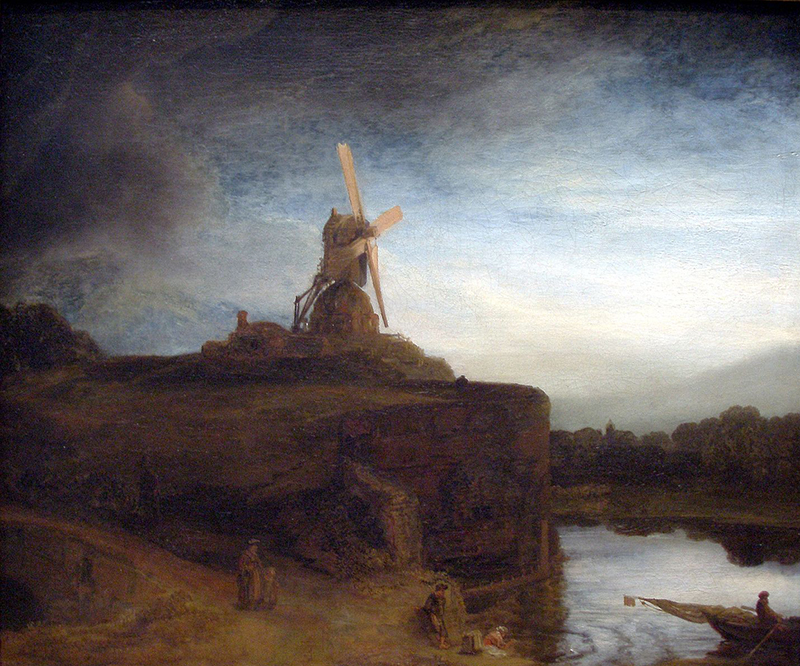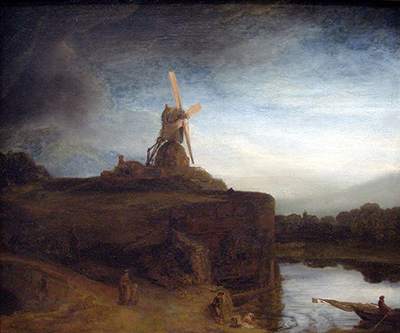The Dutch painter, Rembrandt, painted The Mill between 1645-1648. This masterpiece is now housed in the National Gallery of Art in Washington.
The painting is an oil on canvas creation. For many years, the art world was incredibly divided as to whether Rembrandt had actually painted The Mill, with many doubting the authenticity of the painting. Today, the art world recognises that Rembrandt did indeed paint The Mill.
The Mill is a stunning landscape creation with a windmill at its central focal point. Towards the lower canvas we see a wide moat, on which stands a ruined and derelict bastion.
It is on this that we observe the majestic windmill and a scattering of a few small cottages. As our eye is drawn to the mill, we follow the path that leads from it, towards the left of the painting. It is here that we observe a small bridge, that crosses a sluice, which then leads to a static landmark post.
The Mill is a busy painting and we observe many characters within it, going about their day. We observe a woman and small child who are heading towards the water, we also observe a man towards the bottom of the painting, who is pushing what looks like a heavy barrow up the steep and winding path.
We also observe a woman who is stood by the water, washing clothes. Towards he right of the painting we see a man in a small rowing boat. At first glance, The Mill appears to be a painting of stillness, and almost that of a reflective mood, with not much activity within it. But when we observe it more closely, we see the many people attending their daily chores, and the painting then suddenly is brought to life through all of this activity.
The Mill is a vibrant painting, full of life and movement, although at first glance it appears to be bathed in shadows. The evening light of the sky has been painted in such a way as to give life to the painting.
The weak sun lights up the sky, highlighting the many clouds that are present, but more importantly it highlights the blades of the mill, making them glow. It is almost as if the mill could take flight, as it looks down on its inhabitants far below.
The use of colour and shadow is incredibly important in this painting. Although the entire image is mainly painted in hues of blacks, greys and browns, representing the fading light in the sky. The lightness that is painted in the sky, evokes the feeling of a storm and helps to highlight the radiant beauty of the windmill.
What is difficult to ascertain is if the storm is brewing or if it has passed, as the waters seem to be quite still. What we do gleam from this painting is a romanticised view of the mill, and its surrounding environment.
We do not see a realistic image; a snapshot in time. The softened colours, the earthy tones and the golden glow of the windmill sails, all help to create a sense of calm and belonging.





